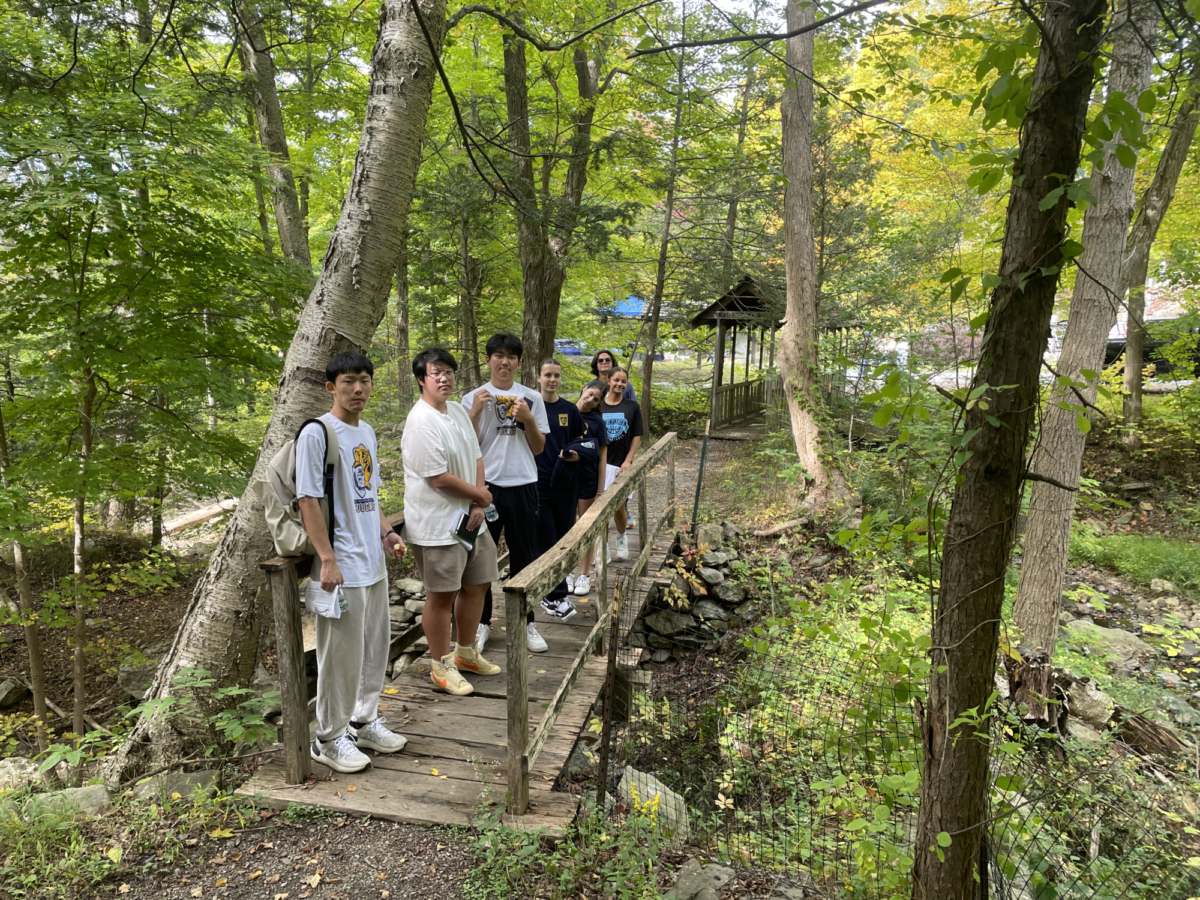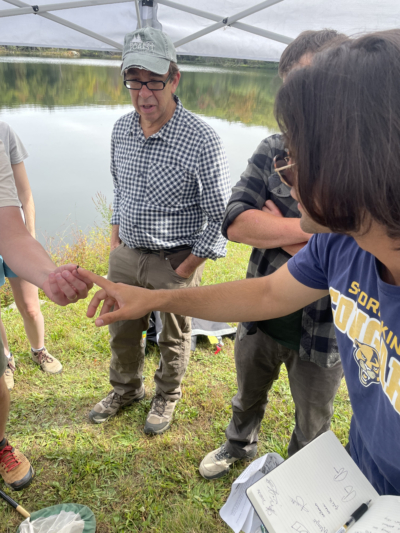At The Storm King School, Environmental Science is more than an academic subject—it’s a lived experience. Both inside and outside the classroom, students explore the interactions between humans and the natural world through an interdisciplinary curriculum that spans biology, ecology, earth science, and environmental policy. The course takes an interdisciplinary approach, blending biology, ecology, geography, earth science, and policy to help students understand the world around them and imagine solutions to environmental challenges.
Recently, the course’s emphasis on experiential learning was brought to life during a visit to Black Rock Forest. Students participated in the “Friends of the Forest” Fall Foliage Hike, a self-guided experience that included opportunities to engage with researchers conducting studies in forest composition, bee diversity, and tree phenology. The hike was a natural extension of the themes students are learning in class, bringing them to life in a real-world context. Listening to scientists working on pollinator diversity and explaining the seasonal behavior of oak and maple trees, students were able to connect class discussions about species interactions and climate indicators with actual fieldwork.
Earlier this fall, students examined earth systems, water resources, and the natural cycles that support life on the planet. Walking through the forest, they were able to observe these systems in action, seeing how geology, hydrology, and ecology interact to support a thriving, biodiverse environment. More recently, as the class focused on ecosystems and biodiversity, the hike offered a good opportunity to learn about real-world research aimed at monitoring and preserving those ecosystems.
Later in the semester, the class will study global change, conservation, and sustainable futures—topics that were reinforced by the hike’s focus on forest restoration and ecological research. Students came away with a better understanding of the course material and a clearer sense of how scientific knowledge informs environmental policy and stewardship efforts.
Environmental Science teacher Mr. MacSwain noted the strong engagement of his students throughout the hike, particularly during discussions with researchers. “The students asked thoughtful questions and made meaningful connections to what we’ve studied in class,” he said. “It was clear they were inspired—not just by the science, but by the passion of the people doing the work.” By stepping into the field, students didn’t just study the environment—they experienced it, and gained a deeper sense of their role in protecting it.



